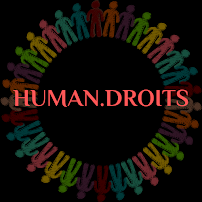The author of this blog is Ritika Sharma. She is the Founder of the blog, HUMAN.DROITS, and is also an LL.M. Graduate from the Geneva Academy of International Humanitarian Law and Human Rights. She can be reached at ritika4523@gmail.com.
 |
| Silhouette of soldiers |
International armed conflict,
also called non-state armed conflict, is the term used to define hostility between two or more states that are involved in armed conflict.
How is international armed conflict different from non-international armed conflict
International armed conflict, as discussed above, means resorting to war by two or more states, while non-international armed conflict refers to the conflict that involves two groups from the same nation, In non-international armed conflict, the third party or multinational force intervenes alongside the government. It is an internal dispute and, therefore is also terms as state-based armed conflict. The common Article 3 to the four Geneva Conventions consists of certain rules that are applicable to non-international armed conflict. The rights that are available to the ones who somehow come in contact with these upheavals are:
- Every person who hasn't taken part actively in the hostilities and is in the clutches of his/her enemy is to be given humane treatment without discriminating on the basis of race, colour, religion or faith, sex, birth or wealth, or any other similar criteria.
- They have the right to be protected against violence to life and person. This includes protection against murder, mutilation, cruel treatment, and torture.
- Right against being taken as hostages and protection from the activities that outrage the personal dignity of the persons who are 'hors de combat' are also to be ensured by each party.
- Parties involved in the hostilities can also not pass sentences or carry out executions without previous judgment.
- The wounded and sick have the right to be collected and cared for.
Today's Armed Conflicts
Currently, the Rule of Law in Armed Conflict Online Portal ["RULAC"] is monitoring more than 110 armed conflicts around the world. This includes both international and non-international armed conflicts and the majority of these are the latter. The Middle East and North Africa are the areas where the number of armed conflicts is recorded to be more than 45 in number. The countries such as Cyprus, Egypt, Israel, Iraq, Libya, Morocco, Palestine, Syria, Turkey, Yemen, and Western Sahara have seen the greatest number of conflicts in these regions. Most of the conflicts emerge from the issues of securing livelihood: food, water, and livestock.
References
Today's Armed Conflicts, Geneva Academy











%20in%20Myanmar.%20The%20image%20features%20a%20resilient%20woman%20standing%20firm%20in.webp)


0 comments:
Post a Comment